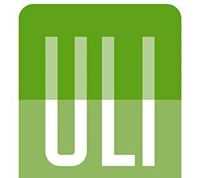Interior Department Finalizes Rule Providing a Foundation for the Future of BLM’s Renewable Energy Program
Rule codifies BLM’s Smart from the Start approach, establishes a robust framework for competitive leasing, and increases transparency and certainty
WASHINGTON – (RealEstateRama) — Advancing the President’s Climate Action Plan to create jobs, cut carbon pollution and develop clean domestic energy, Secretary of the Interior Sally Jewell today announced that the Bureau of Land Management (BLM) finalized its rule governing solar and wind energy development on public lands. The rule strengthens existing policies and creates a new leasing program that will support renewable energy development through competitive leasing processes and incentives to encourage development in suitable areas.

“This new rule not only provides a strong foundation for the future of energy development on America’s public lands, but is an important and exciting milestone in our ongoing efforts to tap the vast solar and wind energy resources across the country,” said Secretary Jewell. “Through a landscape-level approach, we are facilitating responsible renewable energy development in the right places, creating jobs and cutting carbon pollution for the benefit of all Americans.”
The rule formalizes key aspects of the BLM’s existing Smart from the Start approach to renewable energy development. Notably, the rule:
Supports development in areas with the highest generation potential and fewest resource conflicts through financial incentives, awarding leases through competitive processes and streamlining the leasing process
Ensures transparency and predictability in rents and fees – for example, gives developers the option of selecting fixed rate adjustments instead of market-based adjustments; and
Updates the BLM’s current fee structure in response to market conditions, which will bring down near-term costs for solar projects.
The rule complements the Department’s landscape-scale planning efforts, including the Western Solar Plan, California’s Desert Renewable Energy Conservation Plan, and Arizona’s Restoration Design Energy Project, which were designed to streamline development in areas with high generation potential, while protecting important environmental, cultural and recreational resources.
“By offering incentives for development in areas with fewer resource conflicts, the BLM’s rule provides a framework to support all of the landscape scale planning we’ve done to better plan for and manage wind and solar development,” said Assistant Secretary for Land and Minerals Management Janice Schneider. “The rule also refines the BLM’s approach to fair market value, to ensure that taxpayers get a fair return from these important resources.”
The President’s Climate Action Plan calls on Interior to permit 20,000 megawatts of renewable power by 2020. Since 2009, Interior has approved 60 utility-scale renewable energy projects on public lands, including 36 solar, 11 wind and 13 geothermal projects and associated transmission infrastructure that could support nearly 15,500 megawatts of renewable energy capacity, or enough to power approximately 5.1 million homes.
“The BLM is incredibly proud of the work we’ve done over the last eight years supporting wind and solar development,” added BLM Director Neil Kornze. “We went from only a handful of approved projects in 2008 to a robust program with over 15,000 MW approved, six times the amount we had approved in the 25 prior years.”
The rule will support the full range of development activities anticipated by the BLM across the lands it manages. The rule’s competitive leasing provisions will help renewable energy development flourish on the 700,000 acres of public lands that have been identified in Arizona, California, Colorado, Nevada, New Mexico and Utah. The regulations will become effective 30 days after they are published in the Federal Register.
The rule refines the application review process and increases financial certainty by giving developers the option to lock in in fixed rate adjustments and providing for MW capacity fee phase-ins. The rule also allows the BLM to offer lands outside of DLAs competitively; however, the BLM anticipates that most projects in these areas will continue to use the application-by-application process.
Copies of the signed rule and a fact sheet explaining the key changes between the proposed and final rules are available on BLM’s website. The BLM intends to schedule additional information sessions as part of the implementation process for the rule.
Contact:
















